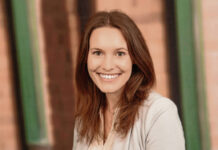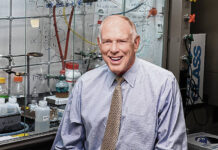ZONNEBEKE, Belgium — On another Anzac Day turned lonesome by the global pandemic, solitary actions show all the more how the sacrifices of Australia and New Zealand during World War I are far from forgotten.
While global attention will turn at dawn on Sunday to the beaches of Turkey’s Gallipoli where the two emerging countries crafted a sense of nationhood from the horrors of war in April 1915, all along the front line in Europe, small ceremonies will show gratitude over a century after the war ended.
A poignant one will take place in Flanders Fields in Belgium, where the so-called Anzac forces also fought, some 2,750 kilometers (1,700 miles) west from Gallipoli along the immense frontline.
Johan Vandewalle is leading a team of volunteers there that has almost finished a 40-meter long memorial to slain brothers, based on an Australian soldier named John “Jack” Hunter whose remains were located decades after he died in the hands of his brother.
Born 60 years ago on the frontline of the Passchendaele Battle, Vandewalle has been steeped from childhood in the terror of the 1914-1918 global conflict that claimed 14 million lives — 5 million civilians and 9 million soldiers, sailors and airmen from 28 countries including nearly 60,000 Australians and at least 16,000 New Zealanders.
Vandewalle’s playgrounds as a kid actually had soldiers still buried underneath, and the early fascination with the war turned into a lifelong passion to do justice to the fallen. He turned into an amateur archeologist seeking to make sure that any body that was still dug up could be identified.
He immediately knew that when roadworks uncovered more bodies in 2006 there was something special about one soldier wrapped in a rubber ground sheet, hand across his heart. After he was hit by the Germans on Sept. 26, 1917, Jack Hunter’s brother Jim found him dying and buried him near a marker so he could recover his remains later.
In a war in which villages and woods were razed by relentless shellfire and turned into unrecognizable mudlands overnight, Jim never recovered his brother’s body, and found that hard to live with.
His niece Mollie Millis, 94, who lives in Brisbane, Queensland, said that on his deathbed Jim “called out his name when he passed. He always wanted to find him but the landscape in Flanders was so altered.”
Vandewalle’s efforts to identify Hunter ended at Millis’s doorstep, and Mollie’s DNA provided the proof that Jack would indeed find a dignified resting place in 2007 at the Buttes New British Cemetery, Polygon Wood, close to where he died. “I will forever be grateful to Johan for taking such good care of Jack,” Millis said.
So touched was Vandewalle by the story of the Hunters that he started building the memorial to slain brothers, overwhelmingly based on private funding. It now awaits a bronze statue to arrive to complete the works.
To Millis, it shows the bond uniting people half a world away, even a century later.
“It is wonderful that Johan has managed to create a memorial for all those that lost brothers in the war. He worked so hard and over so many years and we consider him a true friend of the family,” Millis said.
Even if she lives many more Anzac Days, a visit will not happen. “I would love to see the memorial finished but I am too old now to travel that far.”
Although thousands were allowed to march in Australia again on Sunday, after commemorations were canceled last year, COVID-19 restrictions are still in force throughout much of Europe where ceremonies for Anzac troops are held every year in places like Villers-Bretonneux in France and Ypres in Belgium.
Ambassadors, diplomats and local dignitaries will still have small events but the public at large will only be faraway bystanders at best. Vandewalle wanted a little bit more.
“We will do a special service only for a very small group of people who are welcome to lay a wreath,” Vandewalle said. “Sunday is a special day — Anzac Day as a remembrance to all the fallen.”
____
Associated Press journalists Virginia Mayo and Mark Carlson contributed to this report.




